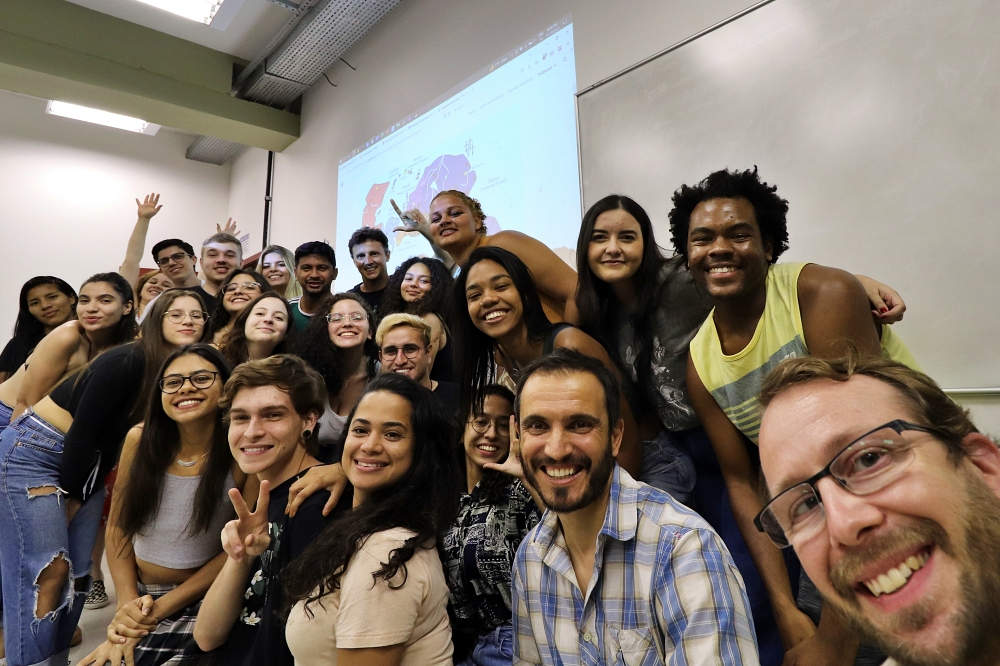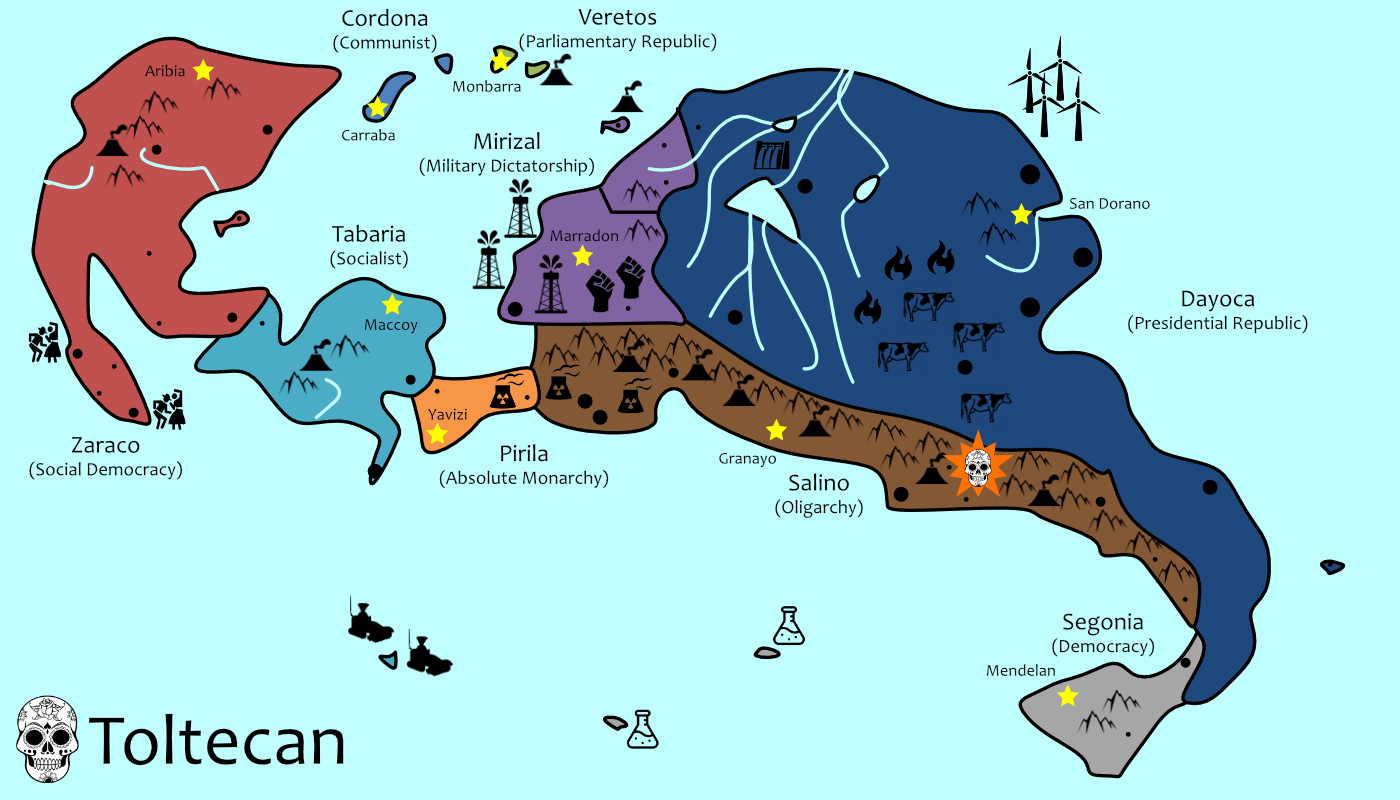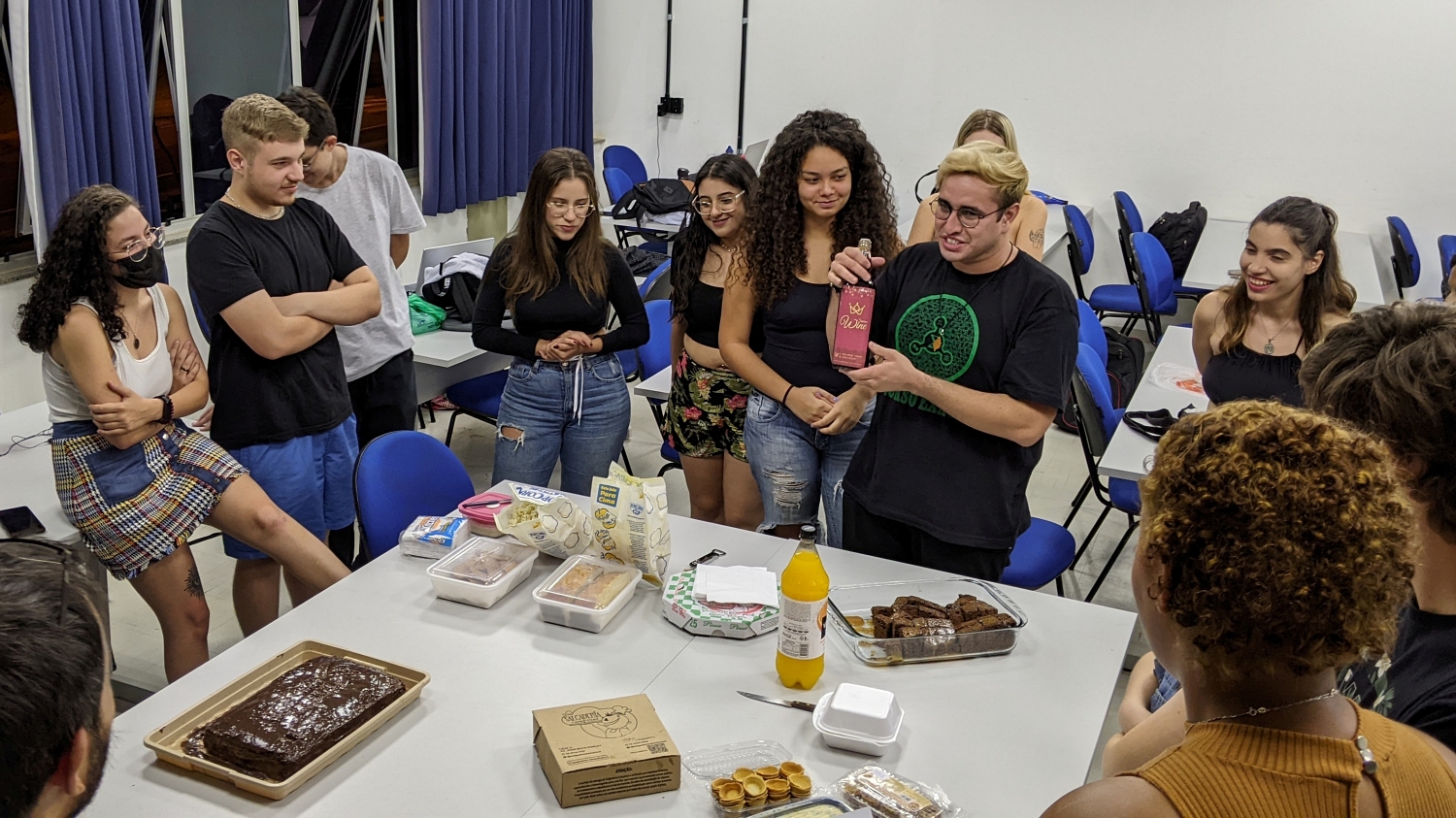Sustainable States: Brazil
Over the past few years, we’ve been developing and running Sustainable States (formerly Greenworks Games), an environmental diplomacy role-playing game. Originally slated to take place between Indonesian students and American students during a 2020 Fulbright at Khairun University, the plan was nixed due to the pandemic. As a result, the experience shifted to online as we waited out the shutdowns. Developed by Dr. Tara Lennon for her political science course at Arizona State University, and then modified with science by Lev, the course teaches students about the basics of science and governance while having students grapple with internal governance challenges and international diplomatic incidents involving environmental topics. Our first attempt at deploying an online-only version was in early 2021, when we ran the game with a few students in Brazil and Indonesia to see if the students would be responsive to this approach. For Brazilian students, who had previous experience with role-playing games, the approach was quite engaging, while for the Indonesian students it was more difficult to follow along. We revamped and developed a full-blown 6-week version that we ran with Brazilian, Ukrainian, and US students in late 2021 to more success, but with a few rough edges to continue to work out.
Finally, in late 2022, we were able to deploy the curriculum in a physical classroom to observe how it performed. In Tara’s political science class, the original version of the game is successful in engaging students and teaching political science topics. But would it be as successful in teaching environmental science and associated governing decisions? We had seen some hints that it would be through our online deployments during the pandemic. Now it was time to test and observe in a physical classroom. Sustainable States was deployed in Roberto’s “Prácticas de Geociências na Educação Básica” (Geoscience Practices in Basic Education) class, an upper-level course for geography students to train them in classroom practices for teaching geosciences at the primary and secondary school levels. In this context, Sustainable States had the dual role of teaching geography students environmental topics while also exposing them to the basics of setting up role-playing games in their future classrooms.
Roberto’s Observations

Roberto and Lev (lower right) with the evening students who participated in Sustainable States
Sustainable States worked really well with the students who got engaged with the activity. The idea appealed to them and they enjoyed that it involved doing something other than sitting and listening to us talk (which we still needed to do to show them the basic concepts, and that was less interesting). We had two classes, an afternoon class that was smaller and an evening class that was bigger. All played on the same map (Toltecan, a South America-inspired map). The afternoon class featured three student groups, two of which became hyper-engaged (the military dictatorship Mirizal and the presidential republic Dayoca). The evening class featured six student groups, of which two became hyper-engaged (the oligarchy Salino and the socialist state Tabaria) and a few others that became involved as well, but not to the same extent. It wasn’t just the men who became engaged by the approach. Although Mirizal and Dayoca were male-dominated teams, Salino and Tabaria were female-dominated teams. Team members would often show up in each others’ classes to negotiate and finalize diplomatic agreements. They even sent along spy videos they had taken of negotiations during their lunch hours.
Sustainable States worked really well with the students who got engaged with the activity. The idea appealed to them and they enjoyed that it involved doing something other than sitting and listening to us talk (which we still needed to do to show them the basic concepts, and that was less engaging). We had two classes, an afternoon class that was smaller and an evening class that was bigger. All played on the same map (Toltecan, a South America-inspired map). The afternoon class featured three student groups, two of which became hyper-engaged (the military dictatorship Mirizal and the presidential republic Dayoca). The evening class featured six student groups, of which two became hyper-engaged (the oligarchy Salino and the socialist state Tabaria) and a few others that became very engaged as well, but not to the same extent. It wasn’t just the men who became engaged by the approach. Although Mirizal and Dayoca were male-dominated teams, Salino and Tabaria were female-dominated teams. Team members would often show up in each others’ classes to negotiate and finalize diplomatic agreements. They even sent along spy videos they had taken of negotiations during their lunch hours.
For this version of Sustainable States, we let students create their own groups, so this may be part of the reason some of the teams became hyper-engaged, as they were working with their friends. Groups that consisted of students who didn’t really know each other that well tended to be less engaged than the friend groups. Having a leader that was extremely engaged helped make the difference for the hyper-engaged teams. Also, the food party at the end of the experience, where students brought themed food from their fantasy countries, helped students bond over the shared game.
There were some short-comings in the experience that the students discussed with us when we chatted with them about their experiences after the food party. First was the overwhelming use of technology in the system. Between Google Docs, Google Drive, Discord, and Google Sites, students had trouble keeping track of what information was where and where they were supposed to post their assignments and diplomatic agreements. As a result, they told us they would have difficulty replicating this in their own classrooms unless the game was simplified. They suggested that we develop more physical materials for the experience to make it easier to deploy in their future classrooms, some of which don’t have the necessary computers and internet connections to make full use of the digital materials.
Overall, though, the experience was good for the class and gave them ideas on how they can incorporate structured play into their future teaching.

For this version of Sustainable States, we let students create their own groups, so this may be part of the reason some of the teams became hyper-engaged, as they were working with their friends. Groups that consisted of students who didn’t really know each other that well tended to be less engaged than the friend groups. Having a leader that was extremely enthusiastic helped make the difference for the hyper-engaged teams. Also, the food party at the end of the experience, where students brought themed food from their fantasy countries, helped students bond over the shared game.
There were some short-comings in the experience that the students discussed with us when we chatted with them about what they thought about Sustainable States after the food party. First was the overwhelming use of technology in the system. Between Google Docs, Google Drive, Discord, and Google Sites, students had trouble keeping track of what information was where and where they were supposed to post their assignments and diplomatic agreements. As a result, they told us they would have difficulty replicating this in their own classrooms unless the game was simplified. They suggested that we develop more physical materials for the experience to make it easier to deploy in their future classrooms, some of which don’t have the necessary computers and internet connections to make full use of the digital materials.
Overall, though, the experience was good for the class and gave them ideas on how they can incorporate structured play into their future teaching.

The food party was the students’ idea and was a nice capstone to the experience.
Notes for Practice
Role-Playing Games in the Classroom
Limit the number of platforms. Although useful for the online deployments, the overwhelming number of digital platforms proved too much for some students. Streamline classroom role-playing games with fewer platforms and maybe dispense with them if not working on a multi-classroom deployment.
Incorporate learning topics into the game. Pre-lectures that introduced important concepts and game mechanics were very disengaging for students, who clearly just wanted to start playing. Incorporate lecture materials as discoverable objects and materials during the scenario.
Thoughtfully create groups. Mix students up so that all groups have strong players. This may require additional team-building and team health exercises to ensure that groups are functioning well.
Create interesting power dynamics between teams. Sustainable States is designed to have countries with varying levels of power, with some vastly underpowered compared to others. If using such a power structure, consider placing strong players on underpowered roles for an additional challenge and to prevent those kinds of roles from becoming non-entities during the experience.
